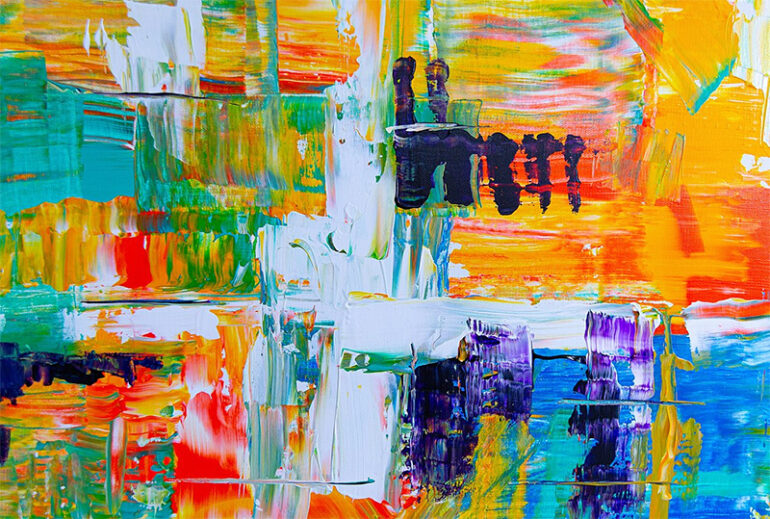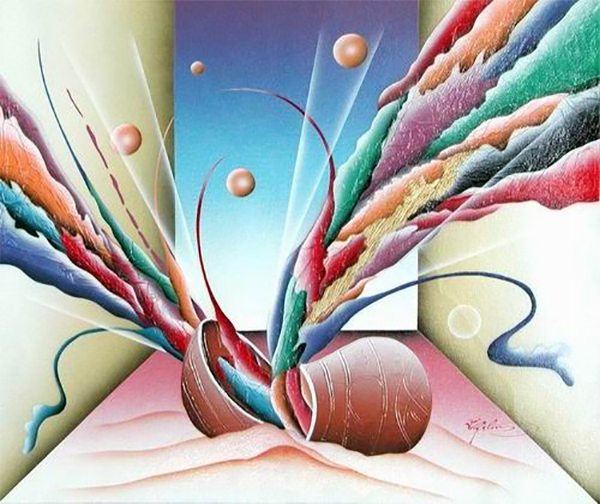Unlike realistic painting, abstract art emerged in the late 1800s and early 1900s. Cubism and Expressionism inspired artists to depict emotions in unrealistic ways. This new approach encouraged people to contemplate and connect with art more personally. It altered artistic expression. Abstraction evolved with new ways and styles to reflect different eras and civilizations. Abstract art still influences, sparks conversations, and enriches culture.
The Origins of Abstract Art
Abstract art arrived in the late 1800s and early 1900s as a departure from realistic painting. Artists aspired to break away from truth to respond to changing civilization. Cubism, Fauvism, and Expressionism encouraged abstract painters to express feelings, thoughts, and concepts via non-representational art. They explored the depths of human experience and encouraged people to think about and connect with art more personally by expanding or flattening forms. This new approach allowed artists to explore abstraction and push the boundaries of art.
The Evolution of Abstraction in Art
Abstract art has altered dramatically since its inception, stretching art’s limitations. As painters moved toward abstraction, they developed new styles and methods that mirrored their eras and civilizations. From Wassily Kandinsky’s vivid colors to Piet Mondrian‘s exact geometric patterns, abstraction evolved. Artists experimented with materials, textures, and groupings to challenge depiction. This transformation has revolutionized the art world, as individuals now connect with art more personally and reflectively, leading to stronger emotional linkages and personal interpretations.
Techniques and Approaches in Abstract Art
There are a lot of different methods and styles used in abstract art. Each one adds to the movement’s rich tapestry. Artists use a variety of techniques, such as expressive brushstrokes, unplanned drips, and splatters of paint, to show their creative ideas. Some artists love geometric accuracy and carefully arrange shapes and lines to make compositions that work well together. Others look at how color affects each other, using bright colors or small changes in tone to make us feel things. Texture is also very important, and artists try out different materials, like collage elements or impasto methods, to give their works more depth and a more tactile feel. These different methods and approaches in abstract art give artists a chance to show who they are and make interesting visual experiences for people to enjoy.
The Impact and Significance of Abstract Art in Contemporary Society
It goes beyond the limits of time and space, but abstract art still has a huge effect on modern society. Its importance comes from the fact that it can question accepted beliefs and make people think and reflect. There is a lot of visual information out there, but abstract art stands out as a strong way to express yourself that makes people think about their own feelings and thoughts. It makes us think about the nature of reality and the depths of our own awareness by breaking away from visual forms. It starts talks, encourages creation, and helps people value their own unique points of view. In the end, it improves our culture and pushes the limits of artistic debate.
The history and development of abstract art have left a lasting mark on the world of art. Abstract art, which doesn’t use realistic images, has pushed people to connect with art on a deeper, more personal level, reaching into the deepest parts of human experience. Abstract art keeps pushing the limits of artistic expression with its wide range of techniques and approaches. It allows for personal readings and emotional ties. Its importance comes from its power to make people think, inspire imagination, and support their own unique points of view. Abstract art adds to the cultural discussion by starting new ones and pushing the limits of what artists can do.
1st and featured image by https://commons.wikimedia.org/wiki/Category:Abstract_paintings#/media/File:Abstract_woman_in_black.jpg2nd image byhttps://commons.wikimedia.org/wiki/Category:Abstract_paintings#/media/File:Anthony_painting_3.jpg

